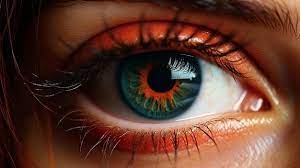
Oculoplasty, also known as oculoplastic surgery, is a specialized branch of ophthalmology that focuses on the diagnosis and treatment of various conditions affecting the eyelids, orbit (eye socket), tear ducts, and adjacent facial structures. Here's an overview of oculoplasty:
- Conditions Treated:
- Eyelid Disorders: Oculoplastic surgeons diagnose and treat a wide range of eyelid conditions, including ptosis (droopy eyelids), entropion (inward-turning eyelids), ectropion (outward-turning eyelids), eyelid tumors, blepharitis (eyelid inflammation), and eyelid malpositions.
- Orbital Disorders: Oculoplastic surgeons manage orbital diseases and conditions such as orbital tumors, thyroid eye disease (Graves' orbitopathy), orbital fractures, and orbital inflammation (orbital cellulitis).
- Tear Duct Disorders: Conditions affecting tear drainage, such as blocked tear ducts (nasolacrimal duct obstruction) and tearing (epiphora), are also addressed by oculoplastic surgeons.
- Facial Rejuvenation: Oculoplastic surgeons perform cosmetic procedures to rejuvenate the eyelids and surrounding facial areas, including eyelid lifts (blepharoplasty), brow lifts, and treatment of periorbital wrinkles and hollows.
- Diagnostic Techniques:
- Oculoplastic surgeons utilize various diagnostic techniques, including clinical examination, imaging studies (such as CT scans and MRI), tear duct tests (dacryocystography), and specialized ophthalmic tests to evaluate eyelid function, tear drainage, and orbital structures.
- Surgical Procedures:
- Eyelid Surgery: Surgical procedures performed by oculoplastic surgeons include eyelid reconstruction, eyelid tumor removal, ptosis repair, blepharoplasty (cosmetic eyelid surgery), entropion and ectropion repair, and eyelid lesion excision.
- Orbital Surgery: Oculoplastic surgeons perform orbital surgeries to address conditions such as orbital decompression for thyroid eye disease, orbital fracture repair, removal of orbital tumors, and orbital reconstruction.
- Tear Duct Surgery: Surgical procedures to manage tear duct disorders may involve dacryocystorhinostomy (DCR) to bypass a blocked tear duct or tear duct stenting to open the tear drainage system.
- Facial Rejuvenation: Oculoplastic surgeons perform cosmetic procedures to enhance the appearance of the eyelids and surrounding facial areas, including upper and lower blepharoplasty, brow lifts, and non-surgical treatments such as Botox and dermal fillers.
- Postoperative Care:
- Oculoplastic surgeons provide comprehensive postoperative care to ensure optimal healing and outcomes following surgery. This may include the use of medications, eye care instructions, follow-up appointments, and management of any complications that may arise.
Oculoplasty plays a crucial role in preserving eye health, restoring function, and enhancing the appearance of the periorbital region. If you have concerns related to eyelid, orbital, or tear duct conditions, it's essential to consult an oculoplastic surgeon for evaluation and appropriate management.
Copyright @ NARAIN EYE CARE